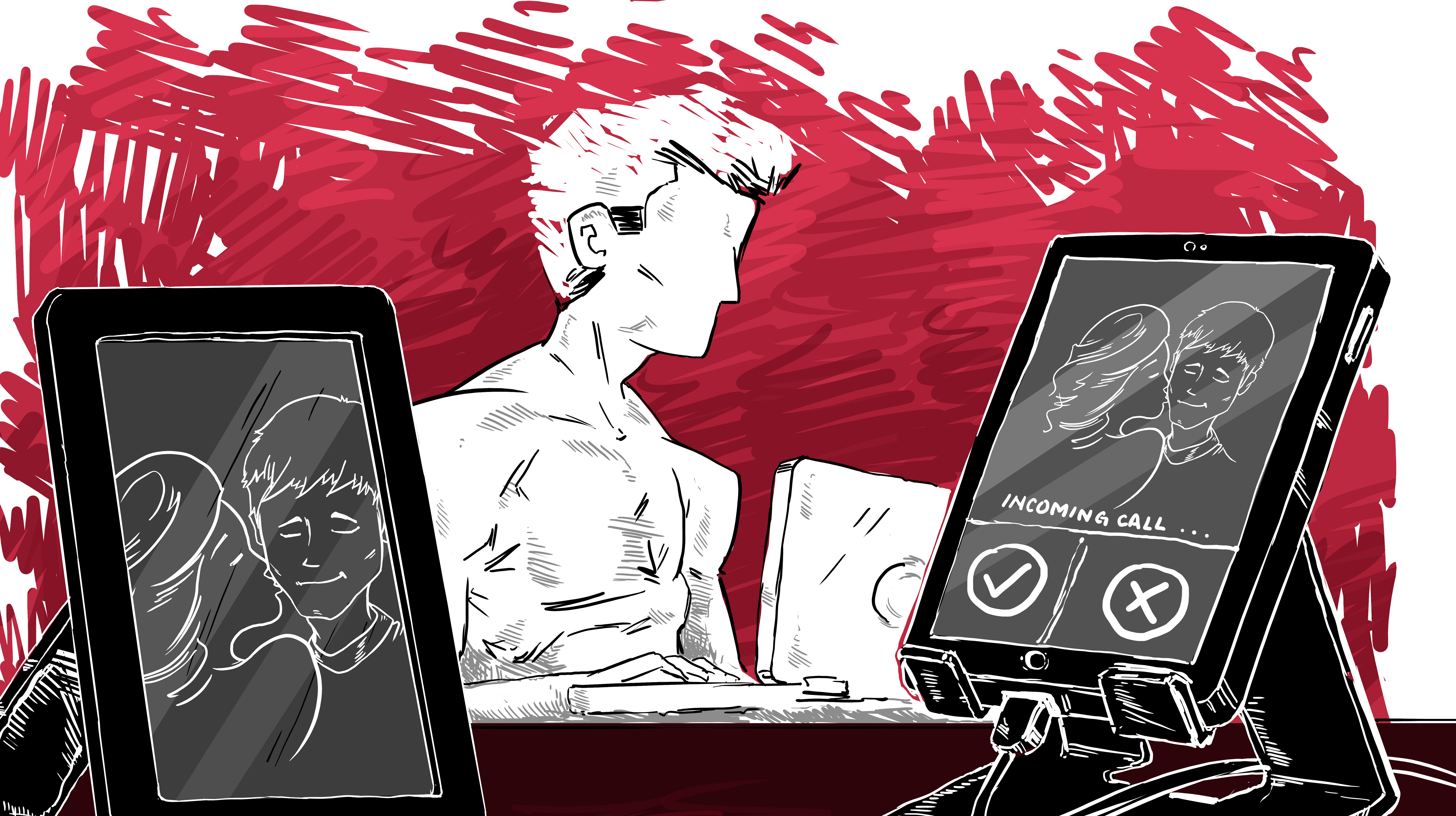In today’s digital culture, satisfying one’s pornography craving is as simple as completing a quick Google search or visiting popular streaming sites such as Pornhub.
Pornhub, which has become one of the most recognized and successful porn websites in the world, keeps its own metrics on traffic to its website. In 2016 alone, the site had 23 billion visitors, which accounted for 64 million per day. People are consuming porn at a rapid rate. In fact, according to Pornhub, Canada falls fourth on its list of the top 10 countries when it comes to per capita page-views.
Free and easy access
Through the internet, pornography has become easily accessible, with much of it being available instantly for free. While many young people may resort to watching pornography online, it also comes in several other forms, including images and writing.
Ovie Egbedi, a third-year mathematics student at Carleton University, said he still remembers the first time he saw a porn video.
“My first experience with pornography was actually quite terrifying if I’m honest with you,” he said. “I was in high school, and then one of our seniors brought a clip titled “Two Girls One Cop” and that was the first for everybody in that room to watch it, so that kind of threw me off.”
Pornography allows people to shamelessly search and consume their tabooed sexual fantasies, fetishes, and interests, often in private. The individual and shared experience of pornography can be an empowering one, but like most forms of media, it also has the potential to be harmful.
Problematic porn?
Sam Whittle is the owner of the award-winning Ottawa-based sex store, Venus Envy, where he speaks on mainstream porn and its influence.
He said much of the mainstream porn available to consumers is problematic.
“I think it’s wider culture that influences porn, and so the majority of mainstream porn ends up being misogynistic, racist or transphobic,” she said.
One could argue that pornography is a form of media that continues to emphasize unrealistic ideals of beauty, race, gender, and sex itself, like many other media platforms do. These stereotypes and ideals can pose a very problematic commentary on real issues that affect a diverse group of people.
“It is often an idealized, unrealistic portrayal of sex made often for the enjoyment of straight men, which usually means leaving out things like consent, realistic female orgasm or diverse body types,” Beau Welter, a sexual assault and trauma counsellor with Carleton’s Health and Counselling Services, said.
Whittle said that pornography does have the potential to do more harm than good in intimate relationships, especially when one partner isn’t honest with the other about their porn viewing habits. However, he added that porn doesn’t have to be a solely individual experience.
“It can bring up feelings of being cheated on almost, or like there is something more exciting about the porn than them, which can be a difficult thing to work through for some people in relationships,” she said. “But, on the other hand, we also recommend that people watch porn together and talk about the porn that they’re watching.”
Venus Envy regularly runs workshops on sex and relationships. Whittle cautions that while pornography as an individual or partnered experience has its benefits, and that many people may find they are better able to express themselves sexually because of it, they also shouldn’t take the things they’re watching on their screens too seriously.
“The one thing we tell people most often is not to treat porn as a how-to-manual,” she said. “My one staff member says, ‘you don’t treat Fast and Furious as a movie that teaches you how to drive, and in the same way you don’t treat porn as a movie that’s teaching you how to have sex.’ ”
Egbedi said he understands how pornography can be damaging to intimate relationships.
“I can see it being dangerous in relationships in the sense that when the relationship becomes intimate and involving people with less experience, pornography could really cloud their judgment,” he said. “It could also give [heterosexual men] a false perspective of how women are.”
Porn pros & cons
Samira Cimpaye, a first-year neuroscience student at Carleton, said it’s sexual activity but not necessarily intimacy, that has become a regular part of life for many young adults.
“A lot of people are having less relationships, just hook-ups on dating sites,” she said. “People don’t know what it’s like to date anymore. [They] only engage in sexual relationships.”
Meanwhile, Joel Reggie, a second-year engineering student at Carleton, acknowledged that there are pros and cons when it comes to pornography.
“You can learn from it and try new things out,” he said. “The con is that it’s fake, so you would expect the same things you see in porn in real life, but it’s nothing like that.”
While Reggie admitted to watching porn, he said for him it’s an experience that comes with conflicting emotions.
“When I’m watching porn, it’s great and I enjoy it, but when I’m done watching it feels almost like a sinful thing to do,” he said.
Is porn addiction a real concern?
Though Reggie and many other young adults like him may use porn casually, others may become addicted. However, Whittle said he believes it’s not as large of a problem as some may think.
“I get a lot of questions about porn and sex addictions, and I think honestly it’s a bit sensationalized, but I do think that people can develop an unhealthy relationship with anything, including social media and other things we think about as more neutral,” Whittle said.
Another issue associated with mainstream pornography is the way it can portray sexual violence.
Part of Carleton professor Ummni Khan’s research includes examining people’s porn viewing habits and whether or not violent porn can lead to violence in intimate relationships.
“Especially in the 80s, there was a big push towards more criminalisation of pornography because people believe that if you watch violent porn, for example, it would normalise it for you and you would be more likely to commit sexually violent acts,” said Khan, who is the joint chair of the Pauline Jewett Institute of Women’s and Gender Studies at Carleton. “Basically none of the research really supports that idea.”
Khan pointed out that porn is just one among other many other types of media that have the potential to influence people to commit violent acts.
“Because porn turns us on sexually, there’s a cultural belief that it’s going to have a more indoctrinating effect, and my research tends to not support that assumption,” she said.
Brie Davis, the direct service co-ordinator with the Sexual Assault Support Centre of Ottawa, said she agrees.
“We can’t look at porn as the only factor for sexual violence,” she said. “I see it as part of a larger media consumption.”
Khan added there also tends to be a “moral panic surrounding pornography and young people.”
These controversial issues surrounding pornography, Khan said, have caused an increase in what has been deemed “ethical porn.”
Khan defines ethical porn as part of the porn debate that considers the effects of porn on the viewer, as well as on the actors as it prioritizes consent and ethical forms of compensation.
“[It’s] to make sure everyone involved in a porn product are doing it completely consensually and are being paid for their labour,” she said.
Whittle said while her store no longer sells pornography, when it did, her staff paid special attention to ensuring that it was ethical.
“When we sold porn, we sold a lot of feminist and queer porn,” she said. “That was something people often find very empowering because it shows people having sex in different ways with different bodies.”
Whittle added that there continues to be a great deal of stigma surrounding issues of sex and pornography.
“There’s a long way in removing some of the shame and stigma around it, but also it’s a great way for couples to talk about what they’re into and to explore sexuality without having to actually do anything yet,” she said.
Graphic by Manoj Thayalan






